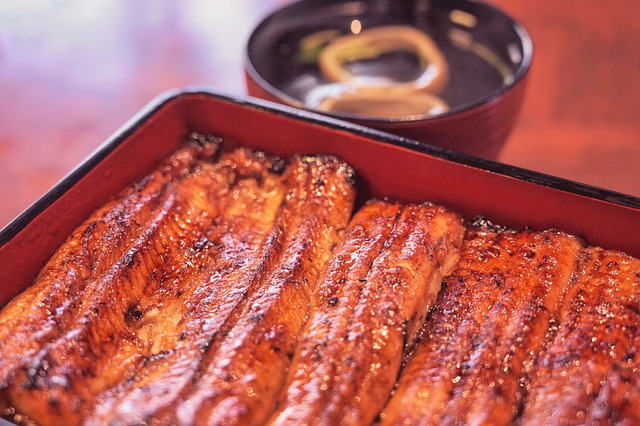Special Occasion Foods:
Osechi Ryori: New Year’s Traditional Foods
Chirashi Sushi: Celebratory Sushi Dish
Unagi: Grilled Eel for Special Occasions
Matsutake: Autumn Mushroom for Special Occasions

As the seasons change and special occasions come around, Japanese cuisine is heavily influenced by tradition and a deep connection to nature. One such example is Osechi Ryori, a beloved set of traditional foods eaten during the New Year holiday. Osechi Ryori is typically served in ornate lacquer boxes and contains an array of tiny dishes that symbolize New Year’s wishes for health, happiness, and prosperity. From sweet black beans to fish cakes, each bite is a celebration of the coming year.
Another celebratory dish is Chirashi Sushi, a colorful medley of rice, vegetables, and seafood arranged in an eye-catching style. This sushi dish is often served during festivals and celebrations, and its vibrant colors and fresh flavors make it a favorite among food lovers.
For even more special occasions, grilled eel or Unagi is a must-try. Eel is considered a delicacy in Japan and is often served during special events like weddings and graduations. The tender and flavorful meat is typically grilled with a sweet soy sauce glaze and served over a bed of rice.

Finally, Matsutake is an autumn mushroom that is prized for its earthy aroma and delicate flavor. This luxurious ingredient is known for its versatility and can be used in various dishes, from soups to stews, and even grilled on skewers.
Whether enjoyed during a holiday, festival, or special occasion, these traditional Japanese foods are the perfect way to celebrate life’s special moments with loved ones.
Special Occasions With Food in Japan
These are some special occasions that are commonly associated with food in Japan:
- Shogatsu (New Year) – As mentioned earlier, Osechi Ryori is the main food associated with the New Year in Japan. Families will spend hours preparing and arranging these dishes, and they are often enjoyed together on New Year’s Day.
- Hinamatsuri (Doll Festival) – Hinamatsuri is a festival celebrated in March to pray for the health and well-being of girls. The main food associated with this festival is Hina-arare, a type of colorful rice cracker that is said to have originated from the ancient imperial court.
- Hanami (Cherry Blossom viewing) – In spring, the cherry blossoms bloom all over Japan, and people gather to enjoy them with picnics and drinks. Hanami bento, or special lunch boxes, are popular items during this time and often feature seasonal ingredients and cute shapes.
- Tanabata (Star Festival) – Tanabata is a summer festival that celebrates the legend of two lovers who are only able to meet once a year. One popular food associated with this festival is somen, a type of thin noodle that is served cold and dipped in a soy-based sauce.
- Tsukimi (Moon viewing) – In autumn, Japanese people have a tradition of viewing the full moon and enjoying Tsukimi dishes, which typically feature moon-shaped foods like mochi or egg dishes.
These are just a few examples of how food is deeply ingrained in Japanese culture and how special occasions are marked by unique and symbolic dishes.

